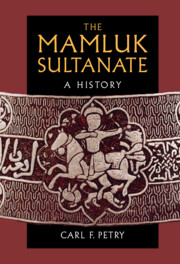Book contents
- The Mamluk Sultanate
- The Mamluk Sultanate
- Copyright page
- Dedication
- Contents
- Figures
- Maps
- Maps
- Introduction
- 1 Synopsis of Events
- 2 Ethos of the “Slave-Soldiers” Regime
- 3 The Mamluk Sultanate from a Global Perspective
- 4 Vocational Classes
- 5 The Political Economy
- 6 Cultural Legacy
- 7 The Rural Environment, Gendered Issues, Minority Communities, Sufi Practice
- Reflections
- Notes
- Bibliography
- Index
6 - Cultural Legacy
Patronage, Audience, Genres, Historiography
Published online by Cambridge University Press: 05 May 2022
- The Mamluk Sultanate
- The Mamluk Sultanate
- Copyright page
- Dedication
- Contents
- Figures
- Maps
- Maps
- Introduction
- 1 Synopsis of Events
- 2 Ethos of the “Slave-Soldiers” Regime
- 3 The Mamluk Sultanate from a Global Perspective
- 4 Vocational Classes
- 5 The Political Economy
- 6 Cultural Legacy
- 7 The Rural Environment, Gendered Issues, Minority Communities, Sufi Practice
- Reflections
- Notes
- Bibliography
- Index
Summary
The Mamluks’ patronage of literary and scholastic arts inspired written products remarkable for theirdiversity. During the era of Mamluk rule, bureaucrats, jurists, essayists, poets, scholars, and theologians generated legal compendia, religious commentaries, political treatises, trust documents, literary anthologies, historical chronicles, manuals of diplomatic and statecraft, and handbooks of urban/rural topography. These works have enabled contemporary researchers to revise long-standing interpretations of traditional disciplines, and to reconsider subjects previously regarded as inaccessible due to a presumed lack of sources. Topics addressed: literary theory, popular culture, historical method, rural life, gender relations, and religious diversity. Since the Sultanate presided over the central Islamic lands during their transition from the medieval to early modern periods (7th/13th-10th/16th centuries), the insights provided by these sources, and their revisionists, are reshaping the field of Islamic History. The chapter analyzes the context of patronage of literary products by the Mamluk ruling class, and other social groups with the means and inclination to do so. It considers the audiences reflected in their contents, the evolution of languages in which they were written (primarily Arabic, but representation of Persian and Turkish as well), their principal genres (poetry/prose), and the development of Historiography.
Keywords
- Type
- Chapter
- Information
- The Mamluk SultanateA History, pp. 203 - 242Publisher: Cambridge University PressPrint publication year: 2022

